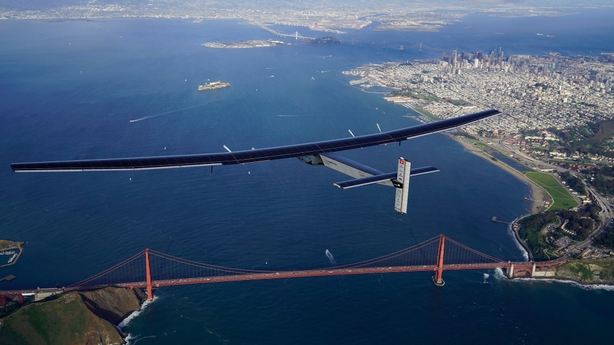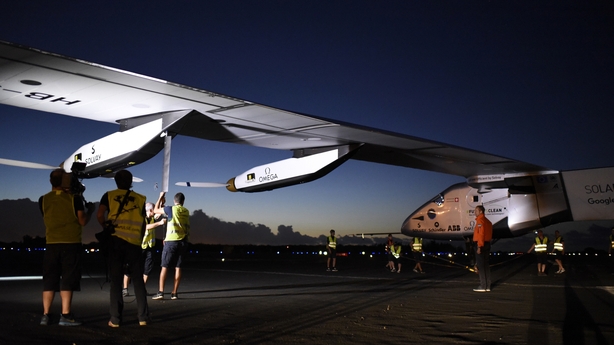An experimental plane flying around the world without consuming a drop of fuel has landed in California.
"The Pacific is done, my friend. I love it, but it's done," said Swiss adventurer Bertrand Piccard, who piloted the Solar Impulse 2 from Hawaii to California.
The arrival at Moffett Airfield marked the completion of the ninth of 13 legs in a journey that began last year in the United Arab Emirates.
The 58-year-old adventurer has been alternating the long solo flights with teammate Andre Borschberg, and flew the challenging mission from the central Pacific to this Silicon Valley town southeast of San Francisco, California.

The goal of the flight is to promote the use of renewable energy with an aircraft powered by 17,000 solar cells.
The plane's wingspan is wider than that of a jumbo jet but its weight is roughly the same as a car's, thanks to its light construction.
The long flight, which had its landing delayed by over two hours, represented a technical "challenge", Mr Piccard said at the journey's outset.
The Pacific crossing is the most dangerous due to a lack of landing sites in the event of an emergency.
Mr Piccard explained yesterday that he could not sleep more than 20 minutes at a time "because after 20 minutes you have to wake up and control everything and if everything goes well then you can go back to sleep".
The Swiss pilot is on a mission to promote alternative energy.

He said he believed that electric-powered planes carrying up to 50 passengers short distances would be possible within ten years.
But he said passenger aircraft with solar-powered batteries would not be viable for commercial aviation.
The SI2 was grounded in July last year when its batteries suffered problems halfway through its 35,000km circumnavigation.
The crew took several months to repair the damage from high tropical temperatures during the flight's first Pacific stage, between Japan and Hawaii.
The aircraft was flown on that leg by Borschberg, whose 118-hour journey smashed the previous record of 76 hours and 45 minutes set by US adventurer Steve Fossett in 2006.
The plane is now expected to cross the United States, stopping in New York before a trans-Atlantic flight to Europe, from where the pilots plan to make their way back to the point of departure in Abu Dhabi.

